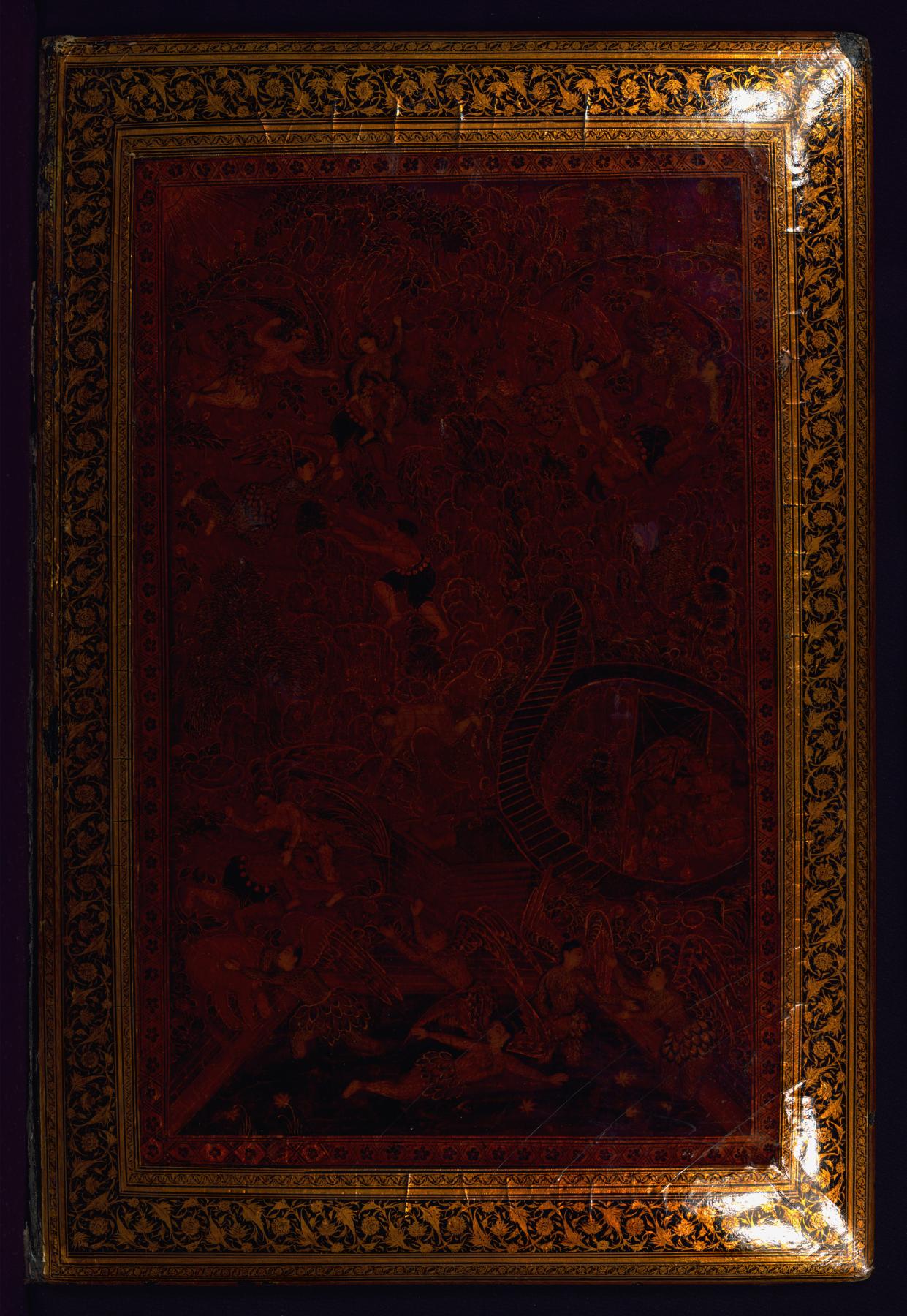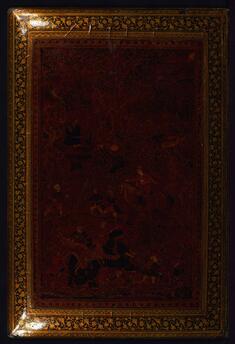Bottom Binding Board from the Khamsa (Quintet) of Amir Khusraw Dihlavi
(Manuscripts and Rare Books, Islamic World , Islamic Manuscripts)
This is the bottom board of the separated/detached binding from W.624.
This binding from Walters manuscript W.624 is composed of lacquer with pictorial scenes. The upper cover depicts an encounter between a prince and a reclusive sage; the lower cover depicts a host of fairies pummeling some outnumbered divs. The doublures are decorated with a field of small floral pattern. The binding was restored probably in Europe in the 13th century AH/AD 19th.
Provenance
Provenance (from the French provenir, 'to come from/forth') is the chronology of the ownership, custody, or location of a historical object. Learn more about provenance at the Walters.
Muhammad Zaki, 1241 AH/AD 1825-1826 [mode of acquisition unknown] [oval seal, fols. 1a, 211a]; 'abd al-raji Muhammad Shafi', 1247 AH/AD 1831-1832 [mode of acquisition unknown] [rectangular seal fols. 1a, 211a]; Muhammad 'Ali [date and mode of acquisition unknown] [large oval seal with no date on fol. 211a]; Henry Walters, Baltimore [date and mode of acquisition unknown]; Walters Art Museum, 1931, by bequest.
Exhibitions
| 2015-2016 | Pearls on a String: Artists, Patrons, and Poets at the Great Islamic Courts. The Walters Art Museum, Baltimore; Asian Art Museum, San Francisco. |
Geographies
Pakistan, Lahore (Place of Origin)
Measurements
Binding H: 11 7/16 × W: 7 13/16 in. (29 × 19.8 cm); Folio H: 11 1/4 x W: 7 1/2 in. (28.5 x 19 cm)
Credit Line
Acquired by Henry Walters
Location in Museum
Not on view
Accession Number
In libraries, galleries, museums, and archives, an accession number is a unique identifier assigned to each object in the collection.
In libraries, galleries, museums, and archives, an accession number is a unique identifier assigned to each object in the collection.
W.624.binding.2





